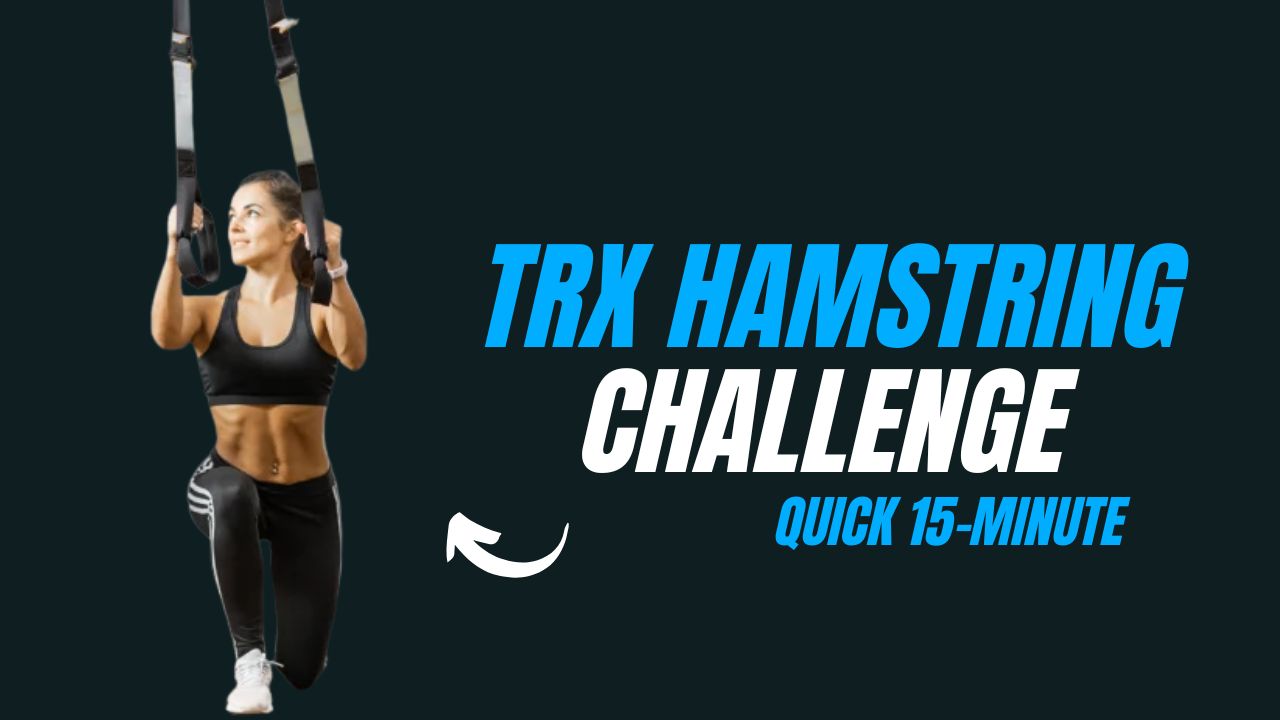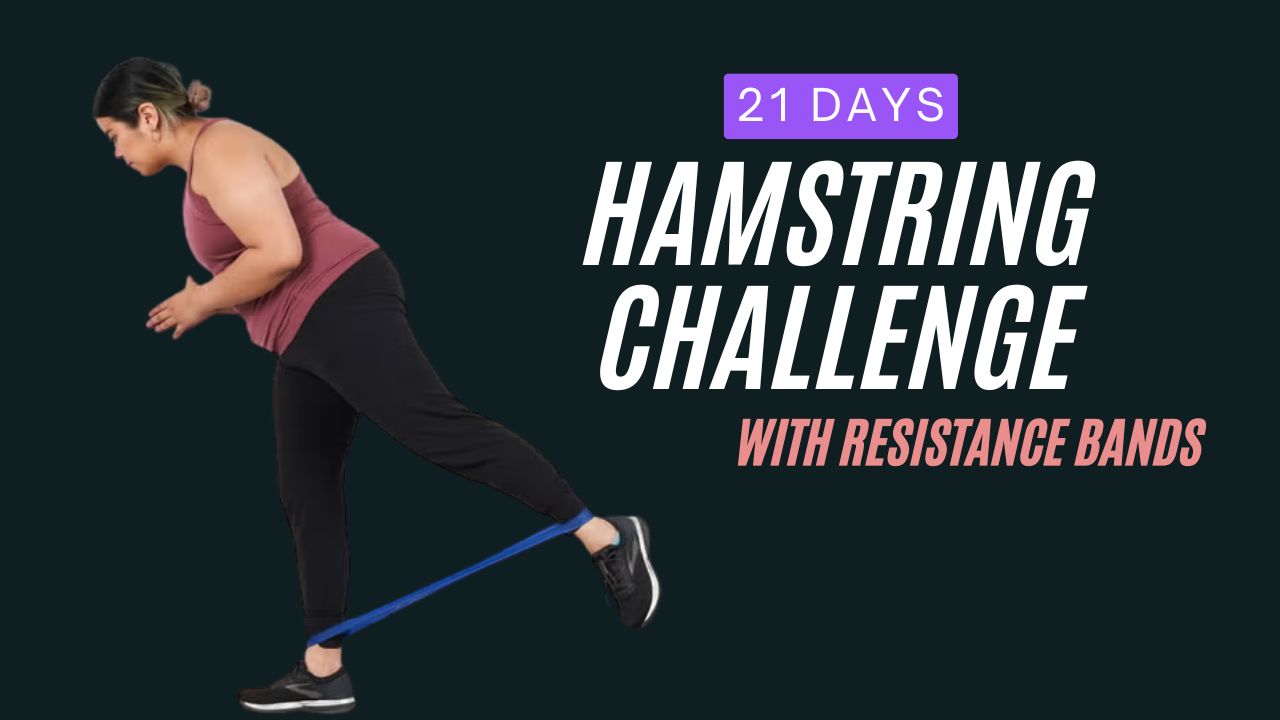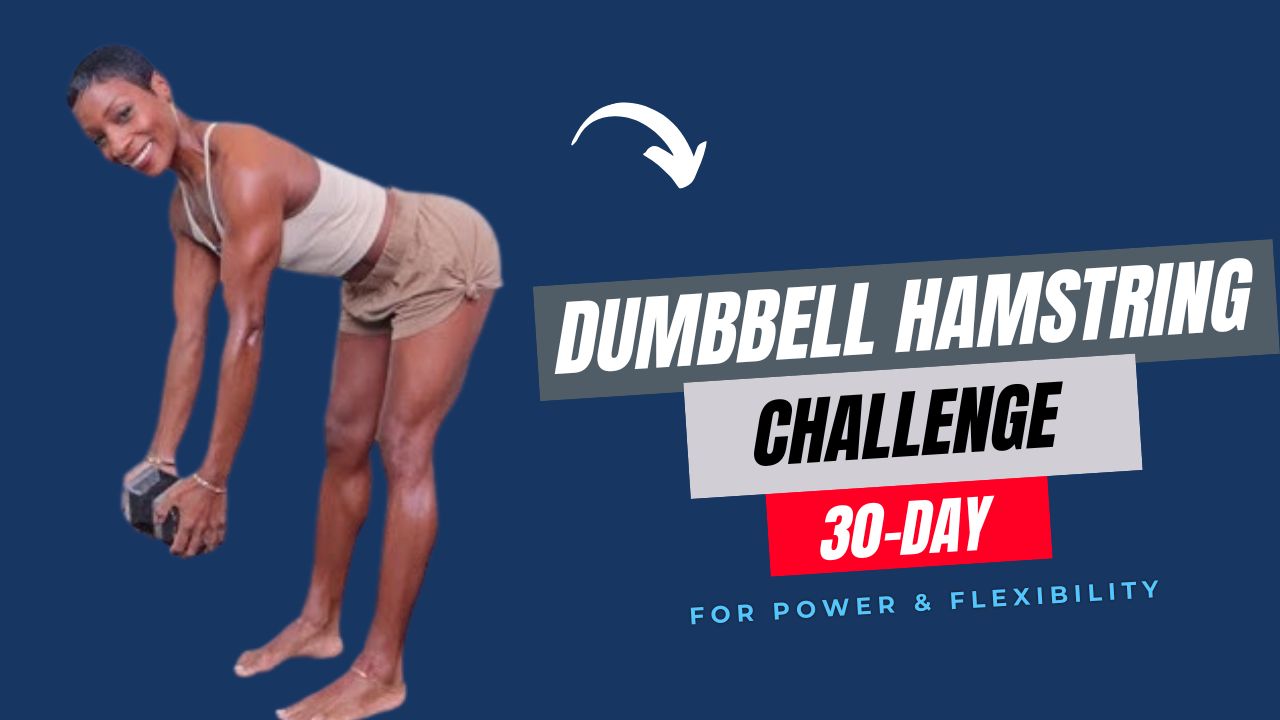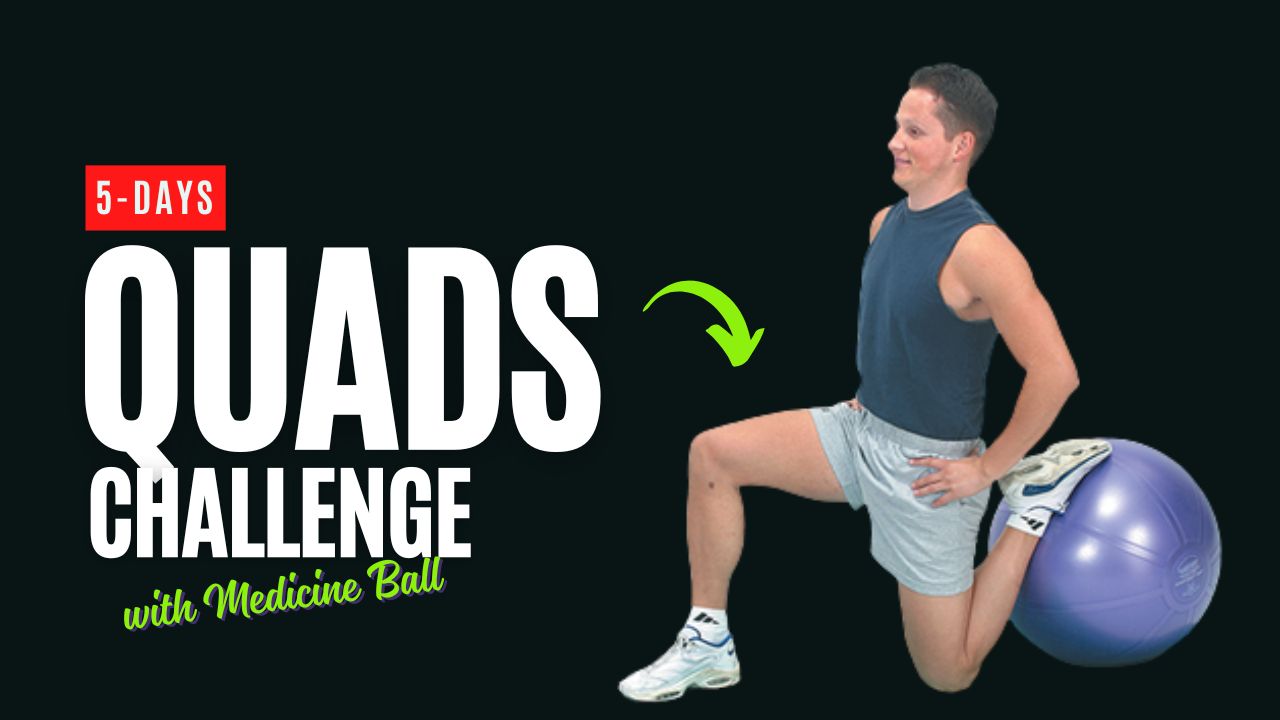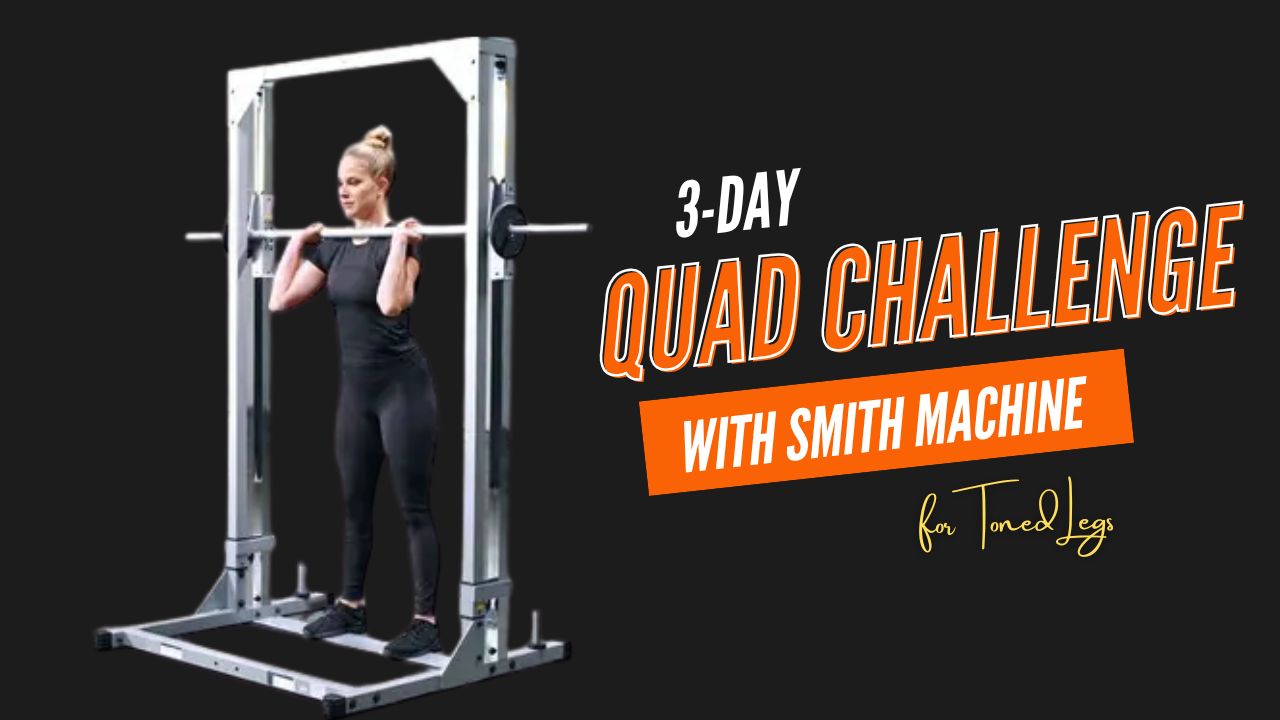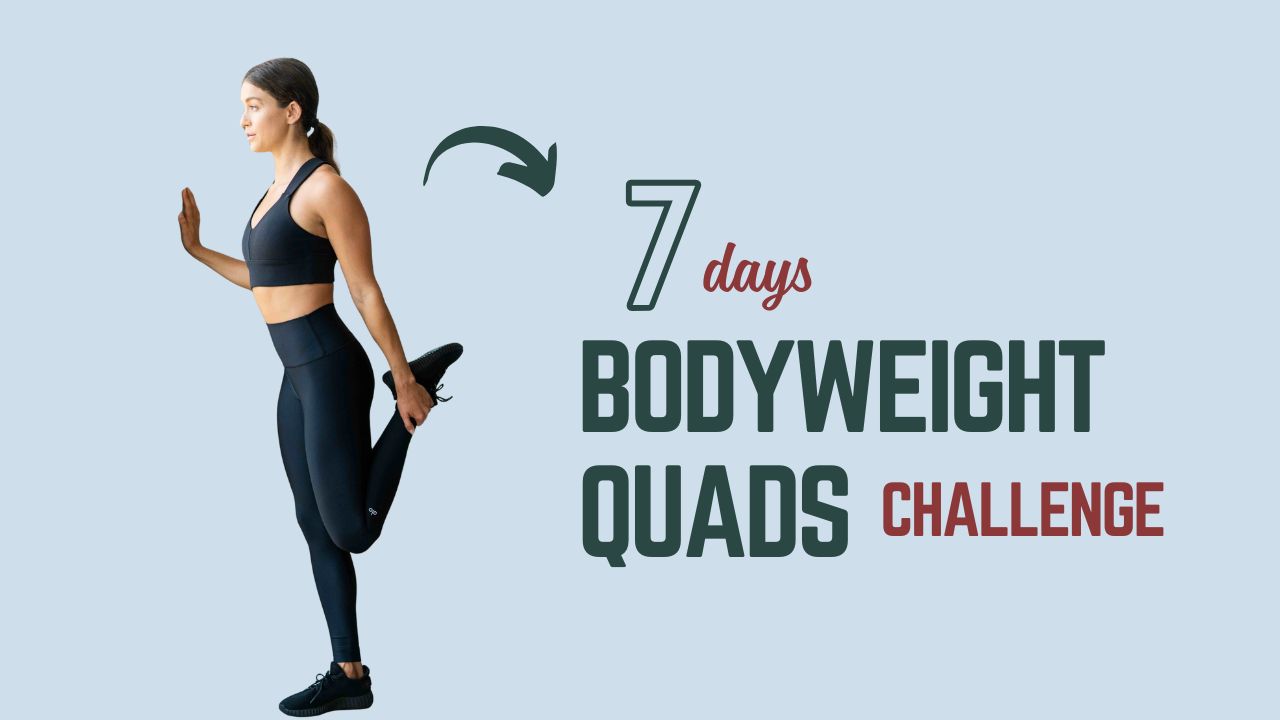Do you know that tight hamstrings are one of the most common causes of lower back pain and reduced athletic performance? While many people focus on quads or glutes, neglecting hamstring flexibility can limit your mobility and increase the risk of injuries.
This 21-day hamstring challenge with resistance bands is designed to improve flexibility, enhance strength, and reduce tightness—whether you are an athlete, office worker, or fitness enthusiast.
Resistance bands are a fantastic tool for targeted stretching because they provide controlled tension and help you achieve a deeper stretch without overstressing the muscles.
Unlike static stretches that only elongate the muscle temporarily, resistance band exercises actively engage your hamstrings, improving both flexibility and strength simultaneously.
Throughout this program, we will guide you through effective exercises with step-by-step instructions and a clear 21-day schedule.
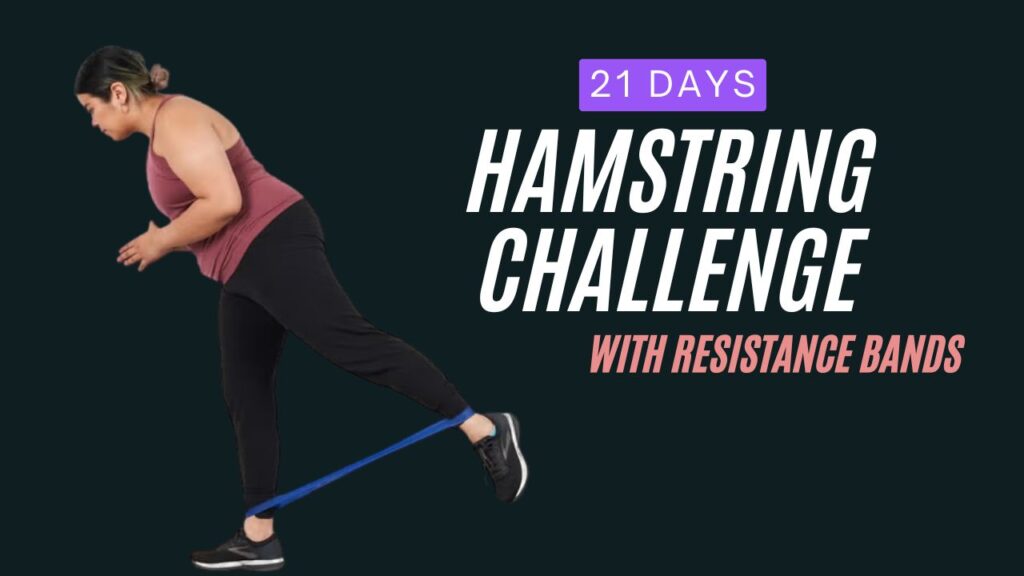
Table of Contents
What Can Happen After 30 Days of This Hamstring Challenge
| Benefit | Description |
|---|---|
| Improved Hamstring Flexibility | Muscles feel longer and more elastic, allowing greater range of motion. |
| Reduced Lower Back Pain | Looser hamstrings decrease tension on the lower back, improving posture. |
| Enhanced Athletic Performance | Increased hamstring strength and flexibility boost running, jumping, and squatting efficiency. |
| Better Posture | Regular stretching and strengthening improve alignment and reduce slouching. |
| Injury Prevention | Strengthened and flexible hamstrings lower the risk of strains and pulls. |
| Increased Blood Flow | Stretching and movement enhance circulation to the posterior chain muscles. |
| Improved Muscle Strength | Resistance band exercises strengthen hamstrings and supporting muscles. |
| Enhanced Mobility | Daily stretches improve hip and leg mobility for functional movements. |
| Reduced Muscle Tightness | Consistent stretching alleviates stiffness caused by prolonged sitting or activity. |
| Boosted Recovery | Muscles recover faster from workouts due to improved flexibility and circulation |
Do’s & Don’ts for the 21-Day Hamstring Challenge
| Do’s | Don’ts |
|---|---|
| Warm up lightly before each session to increase blood flow. | Skip the warm-up or jump straight into stretches. |
| Maintain proper form for all exercises to avoid injury. | Round your back or lock your knees during stretches. |
| Use a resistance band suitable for your flexibility level. | Use a band that is too tight or too loose for your comfort. |
| Hold stretches for the recommended duration and increase gradually. | Bounce or force the stretch beyond your comfort level. |
| Rest at least 1 day per week to allow muscles to recover. | Overtrain by performing daily intense hamstring exercises without breaks. |
| Progressively increase hold times or repetitions after completing 21 days. | Remain stagnant and repeat the same intensity without challenging your muscles. |
| Breathe deeply during stretches to relax the muscles. | Hold your breath or tense your body during stretches. |
| Listen to your body and stop if you feel sharp pain. | Push through sharp pain, which could lead to injury. |
| Incorporate the challenge with light cardio or mobility work. | Combine the challenge with heavy leg workouts on the same day. |
| Track your progress to stay motivated and see improvements. | Neglect tracking or ignoring small improvements. |
Exercises For The Hamstring Challenge
1. Lying Hamstring Stretch with Resistance Band
Description: This classic stretch helps lengthen the hamstring while keeping the lower back protected. It’s ideal for beginners and those recovering from tight muscles.
How to:
- Lie flat on your back with your legs extended.
- Loop a resistance band around the ball of one foot.
- Keep your other leg flat on the floor.
- Gently pull the band toward you, lifting your leg straight until you feel a stretch in the hamstring.
- Hold for 20-30 seconds, then switch legs.
Interesting fact: Stretching the hamstrings regularly can improve gait efficiency and prevent hamstring strains, which are one of the most common injuries in runners.
2. Seated Hamstring Stretch with Band
Description: A seated version of hamstring stretching increases flexibility and targets the muscles in a more controlled position.
How to:
- Sit on the floor with your legs extended.
- Loop a resistance band around the middle of one foot.
- Keep your back straight and gently pull the band toward your torso.
- Lean forward slightly from your hips for a deeper stretch.
- Hold for 25-40 seconds per leg.
Tip: Avoid rounding your back as it can reduce the effectiveness of the stretch and place strain on your lower back.
3. Standing Hamstring Kickback with Band
Description: This dynamic stretch engages both flexibility and strength, preparing your hamstrings for active movement.
How to:
- Stand with feet hip-width apart.
- Secure one end of the resistance band under your foot and hold the other end with your hands.
- Extend the leg backward slowly, keeping your knee slightly bent.
- Return to starting position and repeat 12-15 times per leg.
Do you know? Dynamic stretches like this one are more effective before workouts as they prepare muscles for contraction and improve blood flow.
4. Hamstring Curl with Resistance Band
Description: This exercise strengthens the hamstrings while also improving flexibility and knee stability.
How to:
- Attach a resistance band to a sturdy object at floor level.
- Loop the other end around your ankle.
- Stand facing the anchor point, keep your torso upright, and curl your leg toward your glutes.
- Slowly lower and repeat 10-15 times per leg.
Myth busted: Some people believe hamstring stretches alone are enough for flexibility. Strengthening exercises like hamstring curls actually improve muscle length and prevent tightness.
5. Single-Leg Romanian Deadlift with Band
Description: This exercise not only stretches hamstrings but also engages glutes and stabilizer muscles.
How to:
- Stand on one leg with a resistance band under your foot.
- Hold the other end of the band in both hands.
- Hinge forward at the hips while extending the free leg backward.
- Keep your back straight and lower until you feel a hamstring stretch.
- Slowly return to standing. Perform 10 reps per leg.
Interesting fact: The Romanian deadlift is one of the most effective ways to target the hamstring’s lengthened position, which is often neglected in traditional workouts.
6. Glute Bridge Hamstring Stretch with Band
Description: Combines glute activation with hamstring stretching to promote posterior chain flexibility.
How to:
- Lie on your back with knees bent and feet on the floor.
- Place a resistance band around your thighs, just above the knees.
- Push through your heels to lift your hips into a bridge.
- Slowly straighten one leg while keeping hips elevated.
- Hold 15-20 seconds, switch legs, and repeat 3 times per side.
Do you know? Bridges not only stretch hamstrings but also reduce lower back pain by strengthening supporting muscles.
7. Lateral Hamstring Stretch with Band
Description: Targets the inner hamstring and adductor region for balanced flexibility.
How to:
- Sit on the floor with legs spread wide.
- Loop the resistance band around one foot.
- Lean toward that foot while keeping the other leg extended.
- Hold for 20-30 seconds, then switch sides.
Tip: This stretch also benefits hip mobility, which is critical for squatting, running, and daily activities.
8. Hamstring Slide with Band
Description: A more advanced exercise that combines flexibility with eccentric hamstring strengthening.
How to:
- Lie on your back with feet on a smooth surface and a resistance band looped around your thighs.
- Lift your hips into a bridge.
- Slowly slide your heels away from your body until legs are extended.
- Pull heels back toward glutes while maintaining the bridge. Repeat 10-12 times.
Interesting fact: Eccentric hamstring work reduces the risk of strains, particularly in sprinting and jumping sports
21-Day Hamstring Challenge Routine
| Day | Exercise Focus | Reps / Duration |
|---|---|---|
| 1 | Lying Hamstring Stretch | 2x20s per leg |
| Seated Hamstring Stretch | 2x25s per leg | |
| Standing Hamstring Kickback | 2×12 reps per leg | |
| 2 | Hamstring Curl with Band | 2×10 reps per leg |
| Single-Leg Romanian Deadlift | 2×10 reps per leg | |
| Glute Bridge Hamstring Stretch | 2x15s per leg | |
| 3 | Lateral Hamstring Stretch | 2x20s per leg |
| Hamstring Slide with Band | 2×10 reps | |
| Lying Hamstring Stretch | 3x20s per leg | |
| 4 | Rest Day | – |
| 5 | Seated Hamstring Stretch | 3x25s per leg |
| Standing Hamstring Kickback | 3×15 reps per leg | |
| Hamstring Curl with Band | 2×12 reps per leg | |
| 6 | Single-Leg Romanian Deadlift | 2×12 reps per leg |
| Glute Bridge Hamstring Stretch | 3x15s per leg | |
| Lateral Hamstring Stretch | 3x20s per leg | |
| 7 | Hamstring Slide with Band | 2×12 reps |
| Lying Hamstring Stretch | 3x25s per leg | |
| Seated Hamstring Stretch | 3x30s per leg | |
| 8-14 | Repeat Days 1-7 with slight increase in duration/reps | – |
| 15-21 | Increase hold times by 5s & add 1 extra set for each exercise | – |
Conclusion
By committing to this 21-day hamstring challenge with resistance bands, you are setting yourself up for noticeable improvements in flexibility, mobility, and overall lower body strength.
Over the course of three weeks, your hamstrings will feel less tight, your posture will improve, and movements like running, squatting, or bending will become more effortless.
The combination of stretches and strengthening exercises ensures that your muscles are not just lengthened but also resilient, reducing the risk of injury in daily activities or sports.
Challenge Continuation Idea:
Once you complete the initial 21 days, you can continue progressing by increasing hold times, adding more repetitions, or combining exercises into supersets. For example, pair the Romanian Deadlift with a Hamstring Slide for a more intense posterior chain workout.
You can also integrate light weights or heavier resistance bands to further challenge your hamstrings.
For long-term results, aim to maintain a 2-3 day per week routine, mixing static stretches, dynamic movements, and strengthening exercises to ensure your hamstrings remain flexible and strong year-round.
Frequently Asked Questions (FAQs)
Do I need previous experience to start this 21-day hamstring challenge?
No, this challenge is suitable for beginners and intermediate exercisers. All exercises include step-by-step instructions, and resistance bands allow you to control the intensity.
How long will it take to see results?
Most participants notice improved flexibility and reduced tightness within the first 2-3 weeks. Consistency is key to seeing long-term benefits.
Can I do this challenge every day?
It’s recommended to follow the schedule with 1 rest day per week. Overworking your hamstrings can lead to strain, so rest days help recovery and growth.
Do I need special resistance bands?
No special brand is required, but a medium-resistance band is ideal for beginners. Adjustable or looped bands also work well.
Can I combine this challenge with my regular workouts?
Yes, you can perform this challenge alongside cardio, strength training, or yoga. Just avoid overloading your hamstrings on the same day as heavy leg workouts.
What if I feel pain during an exercise?
Mild discomfort from stretching is normal, but sharp or intense pain is not. Stop immediately, check your form, and consider reducing tension or consulting a fitness professional.
Can I continue after 21 days?
Absolutely! You can progress by increasing hold times, repetitions, or resistance. Maintaining 2-3 sessions per week will keep your hamstrings flexible and strong.
Will this challenge help with lower back pain?
Tight hamstrings often contribute to lower back discomfort. Improving hamstring flexibility through this challenge can relieve tension and improve posture, reducing back strain over time.
How long does each session take?
Each daily session usually takes 15-25 minutes, depending on the number of repetitions and hold times you choose.
Can I do this challenge at home?
Yes! All exercises require minimal space and only a resistance band, making it perfect for home workouts.
